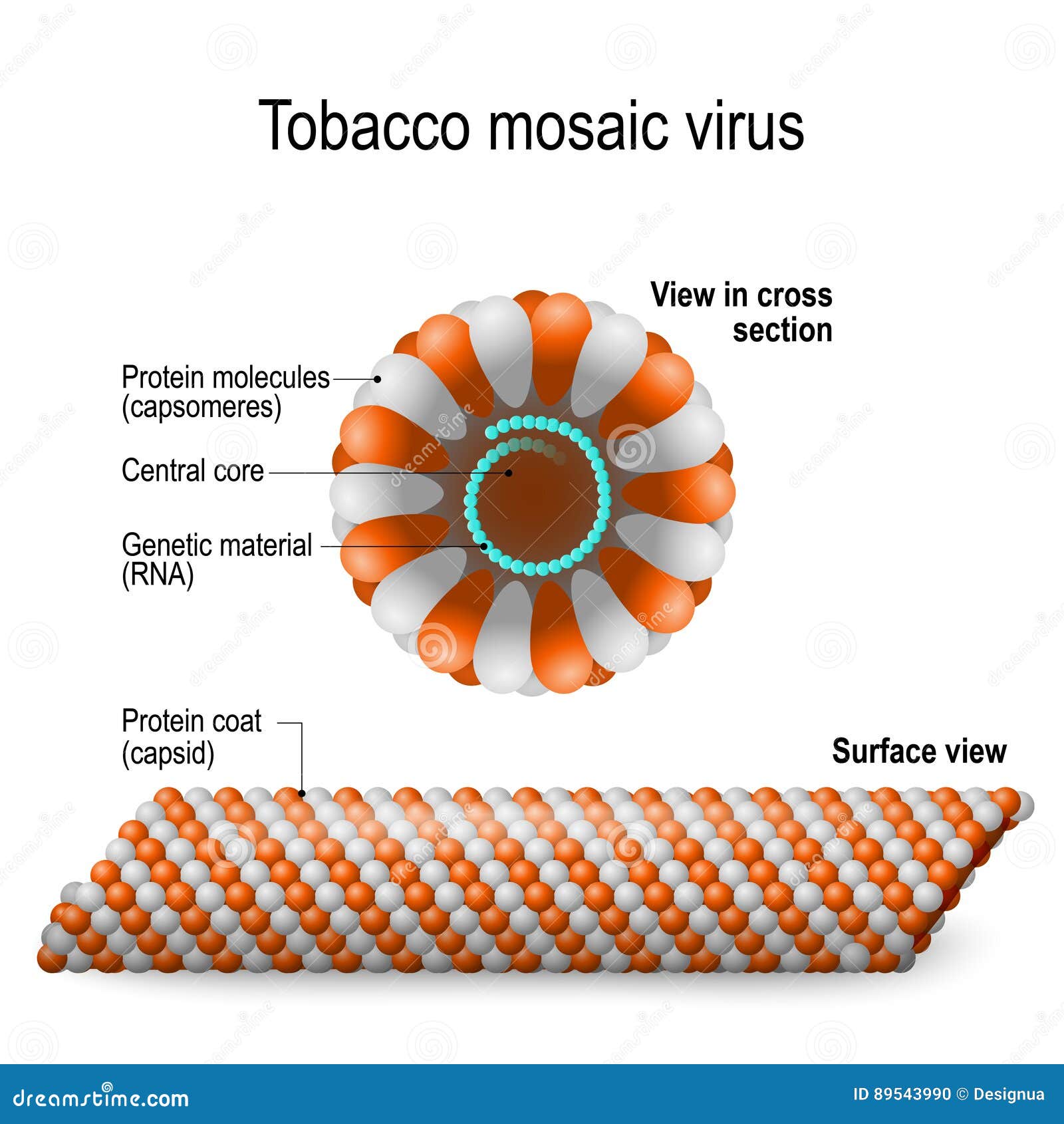During 2003 and 2004, unusual viral symptoms were observed on Surfinia trailing petunias in protected cultivations of Southern France. Symptoms consisted in yellow mosaic and distortion of the leaves accompanied by vein necrosis in some samples. The flowers were deformed and showed light colour break of the petals. Electron microscope observation of negatively stained leaf-dip from symptomatic leaves showed straight rod-shaped virus particles of about 300 nm in length. Sap extracts reacted in double-immunodiffusion tests by forming weak precipitin bands with antisera against Tomato mosaic virus (ToMV) and Tobacco mild green mosaic virus (TMGMV). However, symptoms developed on host range after mechanical inoculation suggested that ToMV was not involved in the disease.
Tobacco Mosaic Virus

By using specific primer pairs designed to amplify the coat protein (CP) genes of ToMV and TMGMV in reverse transcriptase-polymerase chain reaction (RT-PCR), expected amplicon was obtained only with TMGMV primer pair. The identity of the virus was also confirmed by using a specific TMGMV riboprobe in dot-blot hybridization assays of symptomatic leaf extracts. The nucleotide sequence of TMGMV CP of the isolate from trailing petunia, named TMGMV-Pt, was determined and compared with those available from EMBL.
The percentage of nucleotide identity was 97-98% compared with those of other isolates. Further molecular and biological characterization revealed that TMGMV-Pt belonging to the large type group of TMGMV isolates. In fact, the 3' UTR region of TMGMV-Pt consisted of 360 nucleotides, comprising of a 147 base repeat, as reported only for TMGMV large type isolates. Moreover, symptoms development observed on a differentially host range, used to distinguish between large type and small type isolates, confirmed that TMGMV-Pt belonging to the large type group of isolates.
Only one commercial variety of trailing petunia out of 12 tested remained symptomless after mechanical inoculation with TMGMV-Pt. This highlights the potential risk that TMGMV could represent to petunia cultivations. To our knowledge this is the first report of a natural infection by TMGMV in trailing petunia.
In tomato plants, the Tobacco Mosaic Virus has been known to stunt growth while causing yellowing of the leaves and sometimes fruits. In most cases, the virus results in reduced yields. Additionally, the virus can cause uneven ripening in fruits.While this virus commonly affects tomatoes, it can also destroy cherry, pear, apple, potato, and pepper crops. According to botanists, Tobacco Mosaic Virus can additionally affect weeds such as lamb’s quarters and pigweed. The virus can also affect horsenettle, jimson weed, petunia, lettude, cucumbers, beets, and various types of ornamental plants.Some of the other symptoms of Tobacco Mosaic Virus include internal browning under the skin, especially in fruits, as well as yellowish rings on the surface.
Leaves can be reduced in size, or become curled or even malformed. This virus thrives in warmer temperatures.Cultural control is important to avoid Tobacco Mosaic Virus. Growers are encouraged to only purchase transplants from reputable and registered sources. Because there are no chemical controls that work against this virus, precautions must be taken to curb the symptoms or avoid it altogether.One way Tobacco Mosaic Virus can be transferred to indoor grow rooms is by cigarettes. If a grower is smoking or otherwise handling contaminated tobacco products on a regular basis, and then entering their grow rooms without properly sterilizing their hands and clothing, the virus can spread to their indoor plants.
Occurrences of this happening are rare, but it does happen.